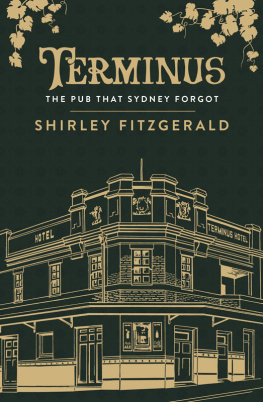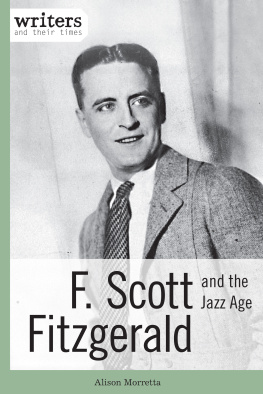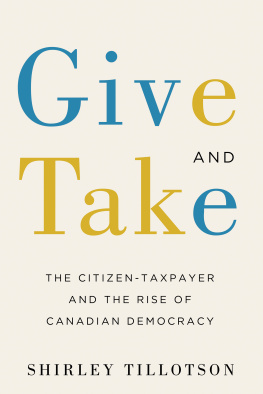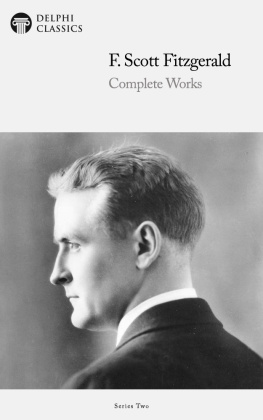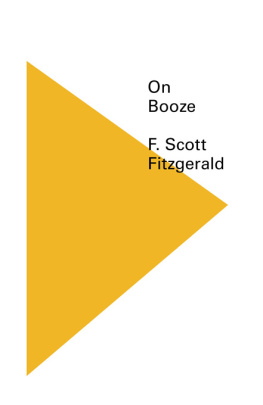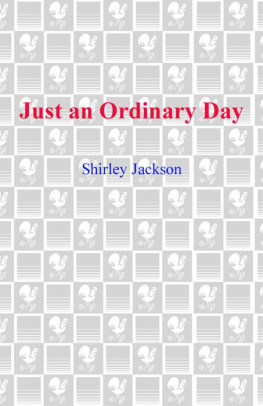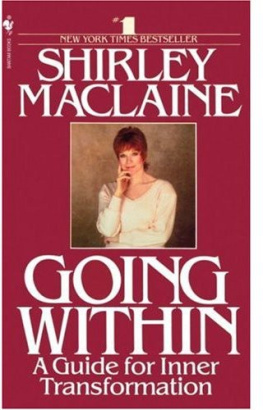Shirley Fitzgerald - Terminus
Here you can read online Shirley Fitzgerald - Terminus full text of the book (entire story) in english for free. Download pdf and epub, get meaning, cover and reviews about this ebook. year: 2020, publisher: Ventura Press, genre: Non-fiction. Description of the work, (preface) as well as reviews are available. Best literature library LitArk.com created for fans of good reading and offers a wide selection of genres:
Romance novel
Science fiction
Adventure
Detective
Science
History
Home and family
Prose
Art
Politics
Computer
Non-fiction
Religion
Business
Children
Humor
Choose a favorite category and find really read worthwhile books. Enjoy immersion in the world of imagination, feel the emotions of the characters or learn something new for yourself, make an fascinating discovery.
- Book:Terminus
- Author:
- Publisher:Ventura Press
- Genre:
- Year:2020
- Rating:4 / 5
- Favourites:Add to favourites
- Your mark:
- 80
- 1
- 2
- 3
- 4
- 5
Terminus: summary, description and annotation
We offer to read an annotation, description, summary or preface (depends on what the author of the book "Terminus" wrote himself). If you haven't found the necessary information about the book — write in the comments, we will try to find it.
Terminus — read online for free the complete book (whole text) full work
Below is the text of the book, divided by pages. System saving the place of the last page read, allows you to conveniently read the book "Terminus" online for free, without having to search again every time where you left off. Put a bookmark, and you can go to the page where you finished reading at any time.
Font size:
Interval:
Bookmark:
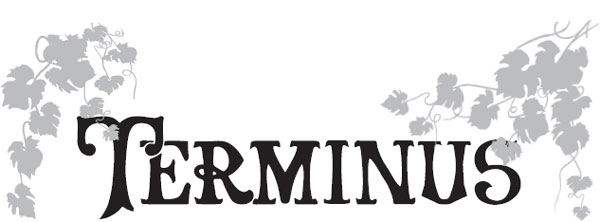
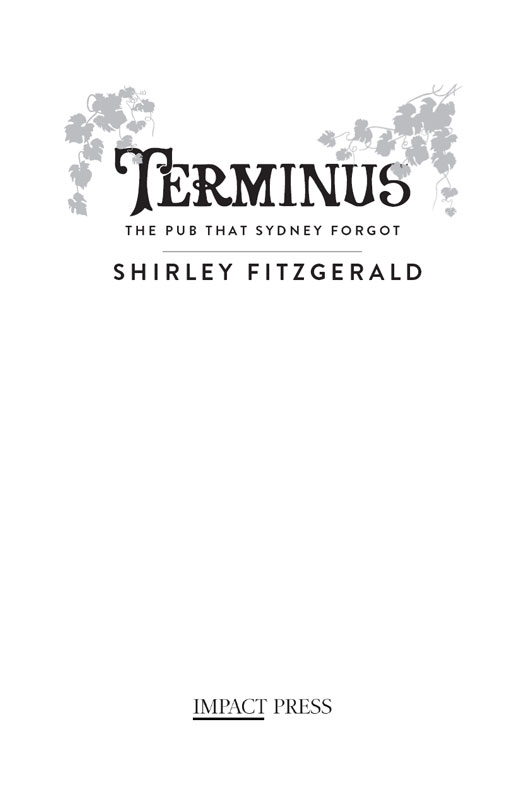
First published in 2018 by Impact Press
an imprint of Ventura Press
PO Box 780, Edgecliff NSW 2027 Australia
www.impactpress.com.au
10 9 8 7 6 5 4 3 2 1
Copyright Shirley Fitzgerald 2018
All rights reserved. No part of this book may be reproduced or transmitted in any form or by any means, electronic or mechanical, including photocopying, recording or by any other information storage retrieval system, without prior permission in writing from the publisher.
National Library of Australia Cataloguing-in-Publication entry:
Fitzgerald, Shirley, author.
Terminus: the pub that Sydney forgot / Shirley Fitzgerald.
ISBN: 9781925384352 (paperback)
ISBN: 9781925384369 (ebook)
Australian history.
Cover and internal design: Deborah Parry Graphics
CONTENTS
PRELUDE
W HERE is the Terminus? For that matter, where is Pyrmont? Today it is a fashionable precinct of Sydney, favoured for its proximity to the city centre, and its water views and amenities, including the newly refurbished heritage hotel called the Terminus. It stands on the corner of Harris and John Streets, close to high-rise apartments and high-tech offices. A far cry from the historical Pyrmont that was isolated and invisible for most of its history.
The Pyrmont peninsula is mainly rock; beautiful sandstone. Not very hospitable for living. Or dying. No-one is buried in Pyrmont. You dont dig graves into rock. A recent archeological dig next to the Terminus did not reveal any significant indigenous traces. There were Aboriginal people fishing the waters of the harbour, including the edges of Pyrmont, which they called Pirrama. There are records and stories of their presence until well into the nineteenth century at the southern end of the peninsula, on the alluvial soils surrounding the Blackwattle Swamp. But not on the rock.
The European settlers who were granted land in Pyrmont in the colonys early years were not much interested in this rocky, windswept place either. Private Thomas Jones of the NSW Corps was the first to be granted 55 acres of land that includes the block on which the Terminus now stands. The grant was made in 1795 on condition that he cultivated the land that became known as Jones Farm. But he never tried to farm it, nor did he live in Pyrmont, and he sold the land the following year to Obediah Ikin. Ikin never bothered with cultivating the land either and, according to his granddaughter, sold it to John Macarthur in 1799 for five gallons of rum.
Around this time Thomas Jones and his wife, Elizabeth, were both hanged for the grizzly murder of a man called Samuel Clode. In one of those fateful twists of history, the Jones name is commemorated in Pyrmont by Jones Street, Jones Bay and Jones Bay Wharf, simply because they were the first Europeans who took the land from its indigenous owners. This was not a very propitious beginning.
John Macarthur wasnt much interested in the land either. He was one of the colonys most powerful men and was too focused on political intrigues and a threatened court martial in England to even think about it. When he finally got around to organising a picnic party to inspect the property in 1806, they discovered a spring of fresh water, which was undoubtedly well known to the local Aboriginal people. Thats why they called it Pyrmont, after a fashionable spa town of the same name in Germany. But Pyrmont in Sydney was far from fashionable, and the spring of water became known as Tinkers Well, a place where some of Sydneys most marginal citizens eked out an existence in the late nineteenth century.
Macarthur, famous for his involvement in establishing Australias wool industry, saw no farming potential in the area. He did establish a small salt-making plant at Pyrmont and he built a mill on the high ground that was located near what would later be known as Mill Street. Customers could row across Cockle Bay from town to have their grain turned into flour, but this probably wasnt a very attractive proposition, and the mill was closed after a few years. In 1832, long after the mill
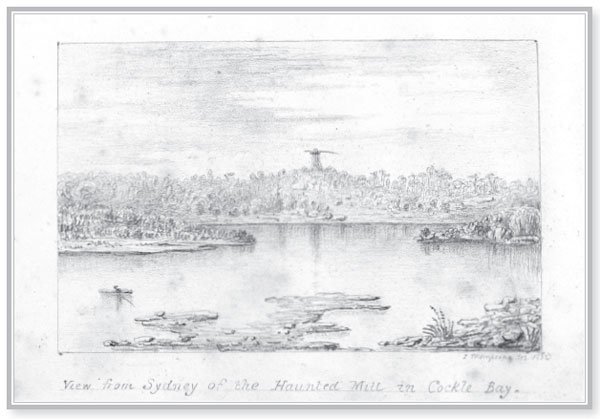
John Thompson,View from Sydney of the haunted mill in Cockle Bay, 1832.
Dixon Library, SL NSW, DL PXX 31.
When John Macarthurs son Edward had plans drawn up for a subdivision of the Macarthur land in 1836, he had hoped it might become a fine residential place with large villas. The plan allocated space for a church and some fortifications, as well as a large public reserve that included the land on which the Terminus stands today. But this was not what Pyrmont would become. When the first allotments of land came on the market in 1839, many of the original blocks were sold to speculators interested in industry, wharves and shipbuilding. They would choose to live elsewhere.
By the time a second group of 59 allotments was put on the market in 1840 the public reserve had disappeared from the subdivision map. The lot that includes the block on the corner of Harris and John Streets where the Terminus stands was apparently sold, although the official paperwork reproduced here indicates that it was not transferred to Cornelius Lundie until the following year. He immediately sold it on to William Allison who held the land until 1847 when he sold it to William Lee.
The story of the present hotel really begins in 1862 when Peter Brennan bought the block from Lee and built a hotel on the corner that he called the Coopers Arms. But this block was also the site of an older pub, Pyrmonts first hotel, and many of the surnames that appear in the following document Allison, Lee, Brennan, Clayton, Goodall and Pratt are relevant to the history of a hotel on this block.
Not all of the blocks were sold in these early land sales. However, by the 1850s industries and wharves had established themselves along the Darling Harbour waterfront and large-scale quarrying of the peninsula was underway. During the second half of the nineteenth century, the western half of Pyrmont was literally carted away as a huge tonnage of its sandstone was used to build Sydney. Pyrmonts rock rose up again in the form of fine public buildings along the best streets of the city: the University of Sydneys Great Hall, churches, banks and bridges.
In Pyrmont itself, humbler buildings emerged. Shops, churches, schools, a post office, hotels and a police station were built to service a growing population the families of men who worked in the quarries, the boat yards and shipbuilding yards, the industrial workshops and on the wharves. By the beginning of the twentieth century, the peninsula was home to many industries and factories, the citys railway goods yards, great woolstores and powerhouses, meatworks and the sprawling workshops of the Colonial Sugar Refining Company (CSR). There were few public amenities, the air was polluted and the roads were congested with heavy, dangerous traffic. People did not visit Pyrmont for pleasure and, over time, fewer people lived there. The local population began to fall, and continued to fall all through the twentieth century as industry triumphed over houses in the struggle for a foothold on this stony ground.
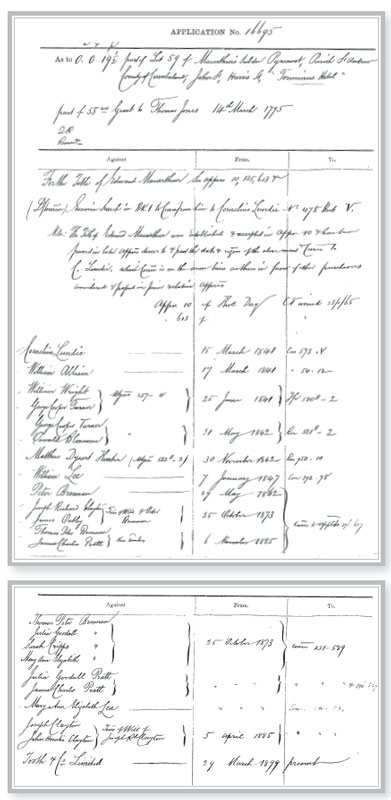
Font size:
Interval:
Bookmark:
Similar books «Terminus»
Look at similar books to Terminus. We have selected literature similar in name and meaning in the hope of providing readers with more options to find new, interesting, not yet read works.
Discussion, reviews of the book Terminus and just readers' own opinions. Leave your comments, write what you think about the work, its meaning or the main characters. Specify what exactly you liked and what you didn't like, and why you think so.

